The Ultimate Guide to Alibaba Dropshipping: From A to Z
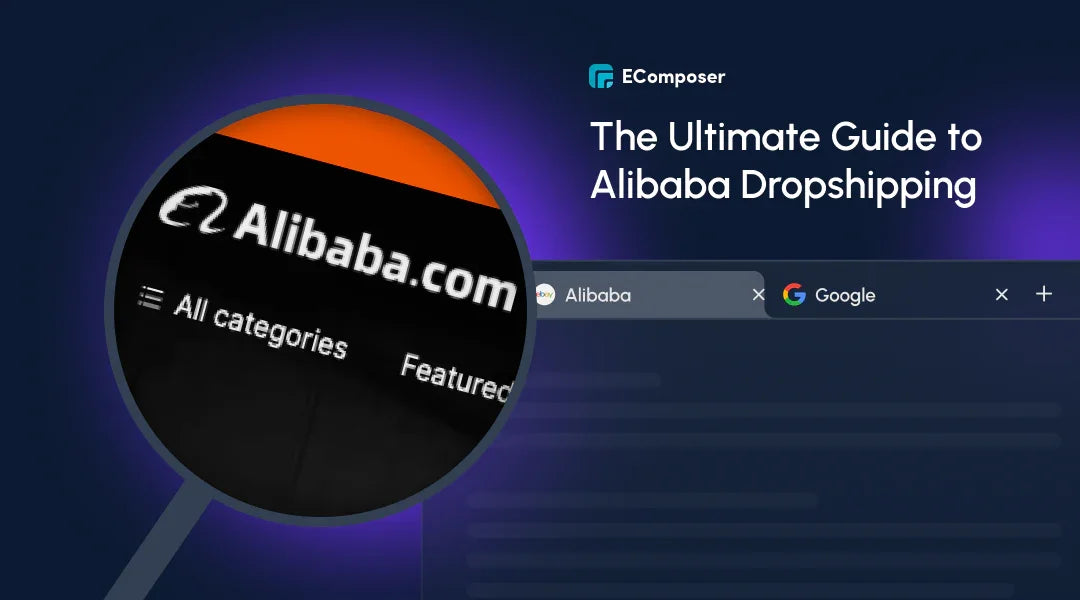
Table Of Contents
One of the biggest e-commerce sites in the world, Alibaba links companies with suppliers and manufacturers worldwide. Alibaba, which is well-known for its enormous product catalog that covers many categories, enables business owners to find almost anything they might possibly need. Because of this, creative business endeavors like dropshipping choose to locate there.
The Ultimate Guide to Alibaba Dropshipping: From A to Z delves into how this business model works seamlessly with Alibaba's offerings. Dropshipping allows you to sell products without holding inventory, leveraging Alibaba's vast network to access affordable goods and ship directly to customers worldwide.
What Is Alibaba?

Founded by Jack Ma in 1999, Alibaba has grown to become one of the world's biggest e-commerce sites. Originally designed to connect Chinese suppliers with international buyers, Alibaba now operates multiple marketplaces, including Alibaba.com for B2B wholesale, AliExpress for B2C retail, Tmall for premium goods, and Taobao for consumer products. Each platform plays a unique role in Alibaba's expansive ecosystem.
Because of its focus on business-to-business (B2B) transactions, Alibaba stands out among e-commerce platforms and is ideal for dropshipping businesses. Alibaba gives business owners who source goods internationally peace of mind by offering dependable dispute resolution and safe transactions with Trade Assurance.
Does Alibaba Support Dropshipping?

Alibaba's Support for Dropshipping
Alibaba makes dropshipping accessible and efficient through its platform and specialized tools. Here's how it supports entrepreneurs in this business model:
- Alibaba Dropshipping Center: This powerful tool helps you discover reliable suppliers, trending products, and competitive pricing with ease. It also offers insights into popular items and sourcing trends, making product selection faster and wiser.
- Customizable Options: Alibaba allows you to negotiate directly with suppliers for custom packaging, branding, and even product modifications, giving your business a unique edge.
- Shipping Solutions: Multiple shipping options, including direct delivery, simplify logistics and help streamline the customer experience.
How It Differs from AliExpress
- Scale: Alibaba caters to B2B transactions, allowing for bulk orders and greater price negotiation, while AliExpress focuses on B2C dropshipping with smaller, ready-to-ship orders.
- Customization: With Alibaba, you have more room for customization and branding, making it ideal for businesses looking to establish a strong identity. In contrast, AliExpress is more suited for beginners with less customization needs.
- Profit Potential: Alibaba's focus on wholesale pricing gives entrepreneurs the chance for higher profit margins, though it may require more effort in negotiation and supplier management.
With its vast supplier network and tailored resources, Alibaba is a powerful ally for dropshipping businesses ready to scale and stand out.
Challenges in Alibaba Dropshipping
While Alibaba is a powerful platform for dropshipping, it comes with unique challenges that entrepreneurs must overcome.
Key Challenges
- Finding Dropshipping-Friendly Suppliers: Unlike AliExpress, where most sellers are accustomed to dropshipping, Alibaba is primarily a B2B platform. This means not all suppliers are equipped or willing to handle dropshipping orders.
- Complex Supplier Communication: Negotiating terms, confirming product details, and establishing trust can be more time-consuming compared to the straightforward ordering process on AliExpress.
How to Navigate These Challenges
- Use the Alibaba Dropshipping Center: This tool can help you identify suppliers who explicitly support dropshipping, saving you time and effort.
- Filter Suppliers Carefully: Look for suppliers with high ratings, verified badges, and clear mentions of dropshipping capabilities in their profiles.
- Communicate Clearly: Ask specific questions about order minimums, shipping times, and customization options to ensure the supplier meets your needs.
- Start Small: Test with a few sample orders to gauge reliability and product quality before scaling up.
By leveraging the right tools and maintaining effective communication, you can overcome these challenges and build a successful dropshipping operation on Alibaba.
Pros and Cons of Alibaba Dropshipping

Advantages of Dropshipping with Alibaba
Huge Product Selection:
From quirky gadgets to trendy apparel, Alibaba's massive product catalog covers virtually every niche you can imagine. Whether you're after the next viral product or specialized items for a specific audience, you'll find it here.
Wholesale Pricing:
Alibaba's focus on wholesale pricing means you can access unbeatable deals, even without holding inventory. Dropshippers can tap into these cost advantages to maximize profit margins while staying competitive.
Negotiation with Suppliers:
One of Alibaba's hidden gems? The ability to negotiate directly with suppliers. Want better pricing, faster shipping, or flexible terms? A little back-and-forth can secure deals that AliExpress sellers wouldn't dream of offering.
Product Customization:
Alibaba opens the door to private-label dropshipping, where you can customize products with your logo, packaging, or unique design. This gives your store a polished, professional feel and helps create brand loyalty among your customers.
Disadvantages of Alibaba Dropshipping
MOQ (Minimum Order Quantity):
One of the most common challenges faced by Alibaba is the requirement for minimum order quantity (MOQ). Many suppliers prefer bulk orders, which doesn't always fit the dropshipping model. To address this:
- Look for suppliers with low or no MOQs listed in their profiles.
- Negotiate directly to request small test orders or flexible terms.
Finding Dropshipping Suppliers:
Alibaba is primarily a B2B platform, meaning not all suppliers are familiar with or equipped for dropshipping. Dropshippers may need to spend extra time researching suppliers who can handle single-item shipments. Here's how to simplify this:
- Use tools like the Alibaba Dropshipping Center to find compatible suppliers.
- Communicate clearly to verify that suppliers support direct-to-customer shipping.
Long Shipping Times & High Costs:
Shipping products globally from China often leads to extended delivery times and higher costs, which can affect customer satisfaction. To manage this:
- Prioritize suppliers offering fast shipping methods, such as ePacket or local warehouses.
- Be transparent with customers about estimated delivery times to avoid complaints.
- Optimize your pricing to absorb shipping fees without cutting into profits.
While these issues require careful planning, a strategic approach can help you overcome the disadvantages and make Alibaba an effective platform for your dropshipping business.
How to Start Dropshipping with Alibaba
Step 1: Create an Account
Ready to dive into the world of Alibaba dropshipping? It all starts with creating your account—your gateway to millions of products and endless possibilities. Here's how to get started in just a few minutes:
- Head to Alibaba.com
Visit Alibaba.com and look to the upper-right corner for the "Join Free" button. Click it—it's your ticket to the world of sourcing.

- Fill In Your Details
You'll land on a registration page. Here's what you need to provide:
- Full Name: Use your real name to build trust with suppliers.
- Country/Region: Select your location for tailored recommendations.
- Email Address: A reliable email ensures smooth communication.
- Phone Number: This helps with account verification and supplier outreach.
- Company Name (Optional): New to dropshipping? Just use your store's name or leave it blank.
- Trade Role: Choose "Buyer"—after all, you're here to source products, not sell them to other businesses!
- Create a Strong Password
Think of a password that's secure but memorable—you'll need it often as you grow your business.
- Verify and Personalize
Alibaba will send a verification code to your email or phone. Confirm your account, then log in to customize your profile. A polished profile with a clear business description makes you look professional and appealing to suppliers.
Why It Matters
Your Alibaba account isn't just a login—it's your gateway to millions of products, trusted suppliers, and the tools you'll need to dominate your market. So take a moment to set it upright, and you'll be one step closer to building your dropshipping empire!
Step 2: Finding Your Dropshipping Products
This is the most exciting step selecting products that will resonate with your customers and make your dropshipping business thrive. Follow these steps to identify winning products on Alibaba and set your store up for success.

- Choose a Profitable Niche
Your niche is the foundation of your business, so pick one that aligns with customer demand and your business goals. Here's how to get it right:
- Find a Niche That Excites and Sells: Think about popular categories like beauty gadgets, eco-friendly products, or tech accessories. These niches often have consistent demand and room for creativity.
- Validate Demand with Google Trends: Search for terms related to your niche (e.g., "beauty products") on Google Trends. Look at the data to see if interest is growing, stable, or seasonal. This ensures your niche has long-term profitability potential.
Read more:
- 200 Best Dropshipping Products to Get High Profit
- 18 Best Dropshipping Product Research Tools
- 19 Top Trending Niches: Potential and Profitable
- Use Alibaba's Search Bar
Head to Alibaba.com and type your niche keyword into the search bar. Choose "Products" to browse through thousands of options. Be specific with your search terms (e.g., "anti-aging beauty tools") to narrow down results and find exactly what you need.
- Analyze Product Pages Like a Pro
Once you find products that catch your eye, dive deep into their details to ensure they meet your needs. Here's what to focus on:
- Unit Price: Check the price per item, which is often listed as a range (e.g., $6.27–$8.79). Remember, the price usually drops if you order in bulk.
- MOQ (Minimum Order Quantity): Some products may require you to order multiple units, but others have an MOQ of just one piece, perfect for dropshipping. Scroll down the page if the MOQ isn't obvious at first glance.
- Product Specifications: Pay attention to details like size, material, functionality, and features. These specs can make or break your product's appeal to customers.
- Validate Your Product Choices
Go beyond Alibaba to confirm your product's potential:
- Google Trends: Cross-check specific product keywords to ensure there's demand for the item.
- Minea or Other Tools: These platforms let you track top-performing products, monitor competitor success, and analyze engagement metrics to see what's hot.
- Compare Suppliers and Secure the Best Deals
Don't settle for the first supplier you find. Alibaba lets you compare suppliers side by side, making it easy to evaluate:
- Pricing: Look for competitive rates that match your profit goals.
- Supplier Ratings: Check for high ratings and positive reviews to ensure reliability.
- Shipping Options: Fast and cost-effective shipping is crucial for dropshipping success.
Pro Tips to Stand Out:
- Test products with low MOQs before committing to larger orders.
- Focus on unique or customizable items to create a brand identity.
- Communicate directly with suppliers to negotiate better prices or terms.
By carefully selecting your niche, validating product demand, and analyzing supplier details, you'll uncover products that not only sell but also build customer loyalty. This step is where creativity meets strategy—so get searching!
Step 3: Choosing Reliable Suppliers

Finding trustworthy suppliers is one of the most critical steps in Alibaba dropshipping. The right supplier ensures product quality, timely delivery, and smooth operations. Here's how to find and select the best:
- Filter for Verified and Reliable Suppliers
To avoid potential pitfalls, narrow your search to suppliers who meet Alibaba's trust and quality standards:
- Verified Supplier Badge: This badge means the supplier's company has been inspected and verified by a third party, ensuring legitimacy and trustworthiness.
- Trade Assurance: This feature protects your payments, guaranteeing refunds if suppliers don't meet agreed-upon product quality or shipping timelines.
- Additional Filters: Use options like "Fast Dispatch" and "Ready to Ship" to prioritize suppliers that offer efficient order fulfillment, a key to dropshipping success.
- Start Your Search
Navigate to Alibaba.com and enter your product keyword (e.g., "beauty products") in the search bar.
- Use the left sidebar filters to refine your results. Select "Verified Manufacturer" and "Trade Assurance" to ensure you're working with trustworthy suppliers.
- Check options like "Ready to Ship" if you need faster processing times.
- Contacting Suppliers Directly
Once you've shortlisted suppliers, it's time to initiate contact. Communication is essential for assessing their reliability and aligning their services with your needs. Use the "Contact Supplier" button on their page or Alibaba's messaging system.
Key Questions to Ask:
- MOQ: What's the minimum order quantity for dropshipping?
- Pricing: Can you provide unit prices, discounts for bulk orders, or sample costs?
- Shipping Times: How long will orders take to reach your target region?
- Payment Terms: What payment methods do you accept for new clients?
- Customization: Do you offer private labeling or product customization options?
- Request for Quotation (RFQ):
If you have specific product requirements or need quotes from multiple suppliers, use Alibaba's "Request for Quotation" (RFQ) feature.
- Fill out your product details, quantity, and delivery requirements.
- Submit the request, and interested suppliers will contact you directly with offers tailored to your needs.
- Engage Through Live Chat or Apps:
Some suppliers enable Live Chat on their pages, allowing real-time communication. Alternatively, many suppliers prefer WeChat for extended discussions, especially when negotiating terms or sharing detailed requirements.
Pro Tips for Choosing the Best Supplier:
- Check Reviews and Ratings: Look at feedback from other buyers to gauge reliability and product quality.
- Order Samples: Before committing, order a sample to assess product quality and delivery speed firsthand.
- Communicate Clearly: Many suppliers use tools like Google Translate to communicate. Be concise and double-check understanding to avoid misinterpretations.
Step 4: Negotiating with Suppliers

Negotiation isn't just a business skill—it's the art of securing the best deals while building relationships. On Alibaba, mastering negotiation can give you the edge to maximize profits and streamline your dropshipping operations. Here's how to do it like a pro:
- Know What to Negotiate
Before you even hit "Contact Supplier," be clear on what you want to achieve:
- Unit Price: Ask for discounts on bulk orders or long-term collaborations. Suppliers often have wiggle room, so don't hesitate to request a better deal.
- MOQ (Minimum Order Quantity): Many suppliers list high MOQs, but with a well-phrased request, you can negotiate lower quantities—sometimes as low as one piece.
- Shipping Terms: Fast, cost-effective shipping is a must for dropshipping. Negotiate for discounted rates or suppliers with nearby warehouses.
- Sample Pricing: Testing products is key—ask for free or discounted samples to minimize initial costs.
- Use Alibaba's Messaging System Like a Boss
The "Contact Supplier" button is your gateway to communication. Use it to build rapport and negotiate terms directly. Craft professional, polite messages that clearly outline your needs, such as:
- Customization requests.
- Clarifications on pricing, MOQ, and shipping.
- Specific timelines for production and delivery.
- Turbocharge with the RFQ Tool
Alibaba's "Request for Quotation" (RFQ) feature is a game-changer. Here's how to use it:
- Submit detailed requirements, such as product specs, quantities, and desired shipping options.
- Receive offers from multiple suppliers, creating healthy competition.
- Compare proposals to find the best combination of price, quality, and terms.
- Build Trust and Relationships
Assertive communication isn't just about getting the lowest price—it's about building trust with suppliers who'll have your back.
- Be Friendly and Clear: Suppliers appreciate a professional, respectful tone.
- Ask the Right Questions: For example:
- What are your payment terms for first-time buyers?
- Can you provide faster shipping options?
- Are there discounts for bulk or repeat orders?
- Stay Flexible: Offer win-win solutions like agreeing to lead times in exchange for better prices.
- Seal the Deal
Once you've compared offers and selected a supplier:
- Confirm every detail in writing, including pricing, shipping timelines, and special requests.
- Test the waters with a small initial order before committing to larger purchases.
- Keep communication lines open to maintain a strong partnership.
Pro Tips for Next-Level Negotiation
- Play the Field: Don't put all your eggs in one basket—negotiate with multiple suppliers to get a sense of market rates.
- Be Ready to Walk Away: If terms don't meet your needs, move on. Alibaba's vast supplier network means there's always another option.
- Be Strategic: Highlight your long-term potential as a buyer to encourage better terms.
By combining clear communication, effective tools like RFQ, and a friendly yet firm negotiation style, you'll secure deals that set your dropshipping business up for success. It's time to turn suppliers into partners and maximize your profits!
Tips for Success in Alibaba Dropshipping

To thrive in Alibaba dropshipping, you need more than just a basic understanding of the platform. It requires strategic product selection, brand-building expertise, and leveraging automation tools to streamline operations. Here's how to maximize your success:
Best Practices for Choosing Products
- Find Products That Sell:
- Use tools like Google Trends, Minea, or AliShark to identify products with increasing demand. Avoid items that are oversaturated or have countless identical listings on popular marketplaces. Look for products with unique features or innovations that set them apart.
- Research Competitors:
- Study competitors selling similar items by checking their pricing, product bundles, and customer reviews. Identify their weaknesses—like slow shipping or limited product descriptions—and use these gaps to craft a stronger offering.
- Develop Your USP (Unique Selling Proposition):
- Your USP is what makes your product or store stand out. Examples include:
- Exclusive Customization: Offer private labeling or custom packaging options from your supplier.
- Better Pricing: Negotiate with suppliers to lower costs and pass on savings to customers.
- Add Value: Include free guides, tutorials, or bonuses that enhance the product's usability.
Building a Dropshipping Brand
- Create a Cohesive Brand Identity:
- A unique store with strong branding builds trust and repeat business. Here's how:
- Visual Consistency: Use a professional logo, a consistent color palette, and cohesive visuals across your website and social media channels.
- Branded Packaging: Partner with Alibaba suppliers who offer branded or custom packaging to enhance the unboxing experience.
- Memorable Store Name: Choose a name that reflects your niche and is easy to remember.
- Focus on Customer Service:
- Stellar service sets you apart in a competitive market.
- Fast Response Times: Address customer inquiries promptly to build trust.
- Clear Communication: Keep customers informed about order progress, especially for longer shipping timelines.
- Hassle-Free Returns: Work with suppliers who have flexible return policies. Make the return process smooth to retain customer loyalty.
- Customer Retention Strategies:
- Use email marketing to offer discounts, product recommendations, or loyalty rewards.
- Encourage customers to leave reviews and share their purchases on social media.
Automation Tools and Resources
Scaling your business becomes easier with the right tools. Here are key automation solutions to optimize your workflow:
- Order Fulfillment Tools:
- Use platforms like DSers or Spocket to automate order placement and tracking with Alibaba suppliers.
- These tools sync with your e-commerce store and reduce manual errors.
- Inventory Management:
- Manage stock levels across multiple suppliers with tools like Shopify Inventory Management or Zoho Inventory.
- Set up notifications for low inventory levels to avoid running out of stock.
- Shipping and Tracking Automation:
- Tools like AfterShip let you provide real-time tracking updates to customers, reducing order status inquiries.
- Automate shipping label generation and updates with apps integrated into your store.
- Market Research Tools:
- Use platforms like Minea or Niche Scraper to stay ahead of trends and uncover winning products.
- Monitor competitors' performance to identify top-selling items and marketing strategies.
Related posts:
- Dropshipping 101: Full Guide To Success for Beginners
- How to Make Money with Dropshipping
- How To Start A Shopify Dropshipping Business With No Money
FAQs
Is Alibaba dropshipping better than AliExpress?
Alibaba and AliExpress serve different purposes, and the better choice depends on your business needs. Alibaba is ideal for those looking to scale, offering options for bulk pricing, product customization, and private labeling. It's perfect for building a unique brand with higher profit margins. On the other hand, AliExpress is more beginner-friendly, with smaller MOQs and ready-to-ship products, making it easier to get started quickly. If you're serious about long-term growth, Alibaba provides more flexibility and scalability.
How long does it take to start dropshipping with Alibaba?
Starting dropshipping with Alibaba can be surprisingly quick if you stay organized. Creating and verifying your Alibaba account takes about 10–15 minutes. Researching products, contacting suppliers, and negotiating terms might take a few days. Setting up your e-commerce store, whether on Shopify, WooCommerce, or another platform, can take 1–2 days. In total, you can get everything up and running in as little as one to two weeks, depending on your preparation and effort.
What should I consider when negotiating with Alibaba suppliers?
When negotiating with suppliers, focus on key factors that impact your business. Start by discussing the MOQ (Minimum Order Quantity) to ensure it fits your dropshipping needs; many suppliers are open to lowering their MOQs for smaller orders. Negotiate unit prices to maximize your profit margins, especially for bulk or repeat orders. Shipping terms are critical—make sure the supplier offers fast and cost-effective options to your target market. Payment terms are another area to discuss; ask about partial payments or escrow services for added security. Always communicate professionally to build trust and establish a strong working relationship.
Can I dropship from Alibaba to any country?
Yes, you can dropship from Alibaba to almost any country, but there are a few considerations. First, check the customs regulations and import laws of your target country to avoid legal complications. Shipping times vary depending on the destination, so work with suppliers offering fast shipping options or warehouses near your market. Additionally, confirm that the payment methods accepted by the supplier align with your region's available options. With proper planning, Alibaba dropshipping can cater to a global customer base effectively.
Conclusion
With its wide choice of products, affordable wholesale prices, and customization options, Alibaba dropshipping provides up countless chances. Although locating trustworthy suppliers and managing MOQs are obstacles, they can be overcome with the help of the tactics and advice in this article. You may create a profitable and expandable dropshipping business if you comprehend the advantages and get over the challenges.
The moment has come to act. Investigate Alibaba's platform, establish contact with suppliers, and bring your concepts to life. With the right approach and determination, your dropshipping journey can begin today—so don't hesitate to dive in and make the most of what Alibaba has to offer. Your entrepreneurial success is just a step away!









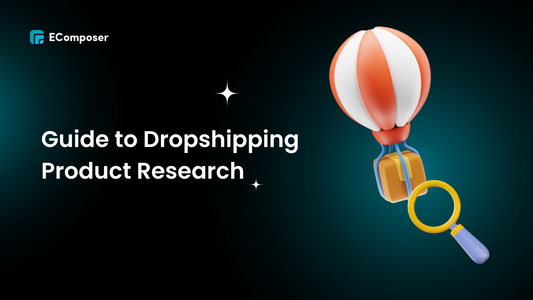
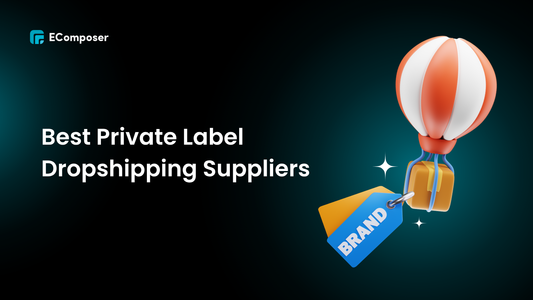
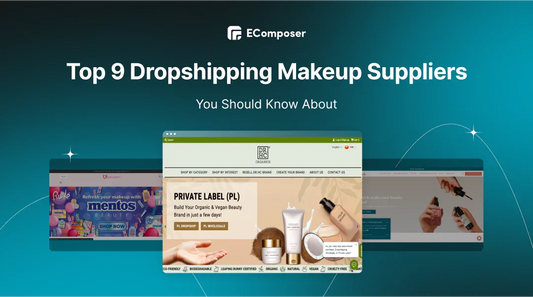

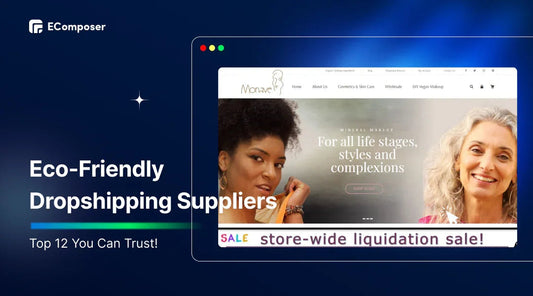
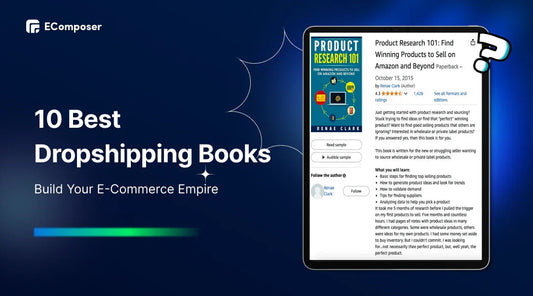







0 comments